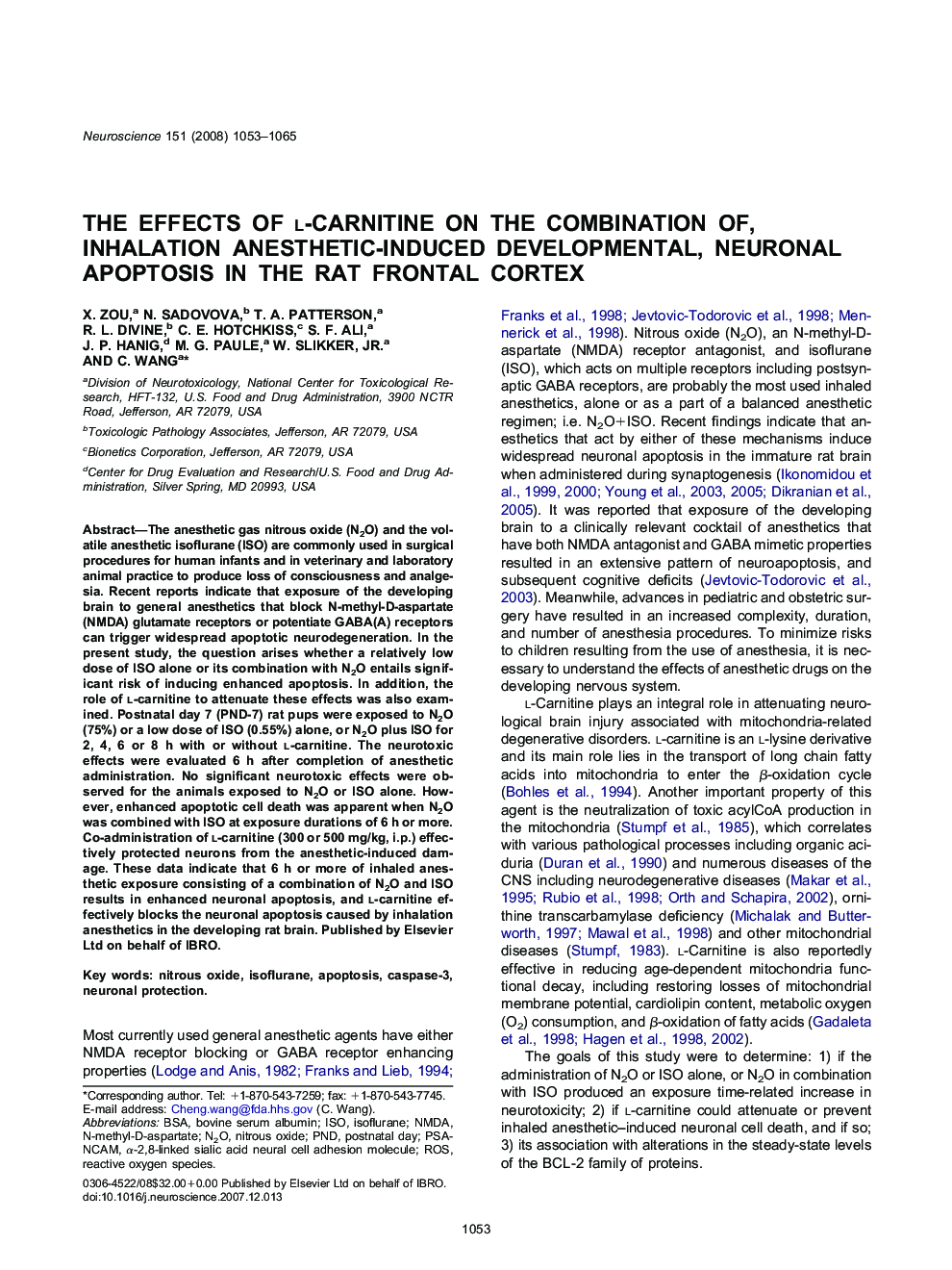| Article ID | Journal | Published Year | Pages | File Type |
|---|---|---|---|---|
| 4340763 | Neuroscience | 2008 | 13 Pages |
The anesthetic gas nitrous oxide (N2O) and the volatile anesthetic isoflurane (ISO) are commonly used in surgical procedures for human infants and in veterinary and laboratory animal practice to produce loss of consciousness and analgesia. Recent reports indicate that exposure of the developing brain to general anesthetics that block N-methyl-D-aspartate (NMDA) glutamate receptors or potentiate GABA(A) receptors can trigger widespread apoptotic neurodegeneration. In the present study, the question arises whether a relatively low dose of ISO alone or its combination with N2O entails significant risk of inducing enhanced apoptosis. In addition, the role of l-carnitine to attenuate these effects was also examined. Postnatal day 7 (PND-7) rat pups were exposed to N2O (75%) or a low dose of ISO (0.55%) alone, or N2O plus ISO for 2, 4, 6 or 8 h with or without l-carnitine. The neurotoxic effects were evaluated 6 h after completion of anesthetic administration. No significant neurotoxic effects were observed for the animals exposed to N2O or ISO alone. However, enhanced apoptotic cell death was apparent when N2O was combined with ISO at exposure durations of 6 h or more. Co-administration of l-carnitine (300 or 500 mg/kg, i.p.) effectively protected neurons from the anesthetic-induced damage. These data indicate that 6 h or more of inhaled anesthetic exposure consisting of a combination of N2O and ISO results in enhanced neuronal apoptosis, and l-carnitine effectively blocks the neuronal apoptosis caused by inhalation anesthetics in the developing rat brain.
